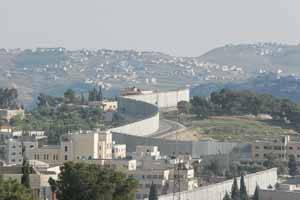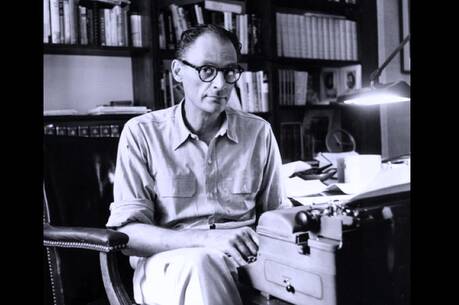Two Capitals, Two States
Jerusalem must become two capitals for two states. The borders would have to run along demographic lines: what is Jewish would constitute the capital of Israel, and what is Arab would be the capital of Palestine. Jerusalem would have to be a divided city, with physical borders separating its Israeli and Palestinian portions. Simply put, the idea of Jerusalem as an open city is unworkable. From security issues to matters relating to tariffs and customs, an open Jerusalem would be impossible to manage. In many ways, a separation of the city would only recognize what is a reality now. Today Arab Jerusalem is virtually separate from Jewish Jerusalem.
Yet close coordination will have to be maintained. Jerusalem is too densely populated, with the Palestinian and Israeli sides too closely intertwined for them to ignore each other. Issues concerning the environment, utilities, zoning and planning, crime and many others will require the creation of structures for municipal coordination and cooperation.
Jerusalems Old City
The sole exception would be the Old City of Jerusalem. The walled one-square kilometer area does not lend itself to division, and any physical barriers would significantly damage the historic city in unacceptable ways. While sovereignty would be divided in the Old City, it would have to remain physically open within the actual walls. This arrangement would necessitate intensive Palestinian and Israeli cooperation in the fields of security, municipal management and historic conservation. A strong international presence would be needed to provide coordination between the two sides.
Irrespective of sovereignty, the various religious denominations would continue to have autonomy in managing their religious sites. To the extent possible, cross-border access to religious sites outside the Old City would be eased, though it could not be guaranteed at all times.
Temple Compound
One area that does not lend itself easily to division is the Haram al Sharif/Temple Mount compound. Claimed both by Muslims (as the site of Prophet Muhammads ascent to heaven) and by Jews (as the location of the Second Temple), it presents two problems. The first is symbolic: who will have sovereignty over the site? The second is concrete: irrespective of sovereignty, how will the site be managed?
The practical aspect is simple enough in that it arises from the easily identifiable needs of both sides: to preserve the site and ensure that no archeological damage befalls it, and to guarantee access by all to the religious sites. Preserving security on and around the compound is another need. Such matters can be regulated, but they require a strong, permanent, third-party presence on the Haram al Sharif/Temple Mount. The role of any third party will be such, indeed, that sovereignty must not be allowed to lose its practical meaning and be stripped down to what might be seen as a purely symbolic matter. And since symbolic questions can often lead to that, the solution may not seem an entirely rational one. A number of formulas have been presented in regard to sovereignty: from shared to suspended to divine to divided. None of these, however, has any intrinsic merit over the others. Ultimately, the matter will have to be subject to political bargaining among the negotiators. Whatever the final decision on sovereignty, a peace agreement must clearly spell out each sides recognition of the significance of this holy site to the other. Too many narratives have been spun out for either side to deny the legitimacy of the others connection to the site; no peaceful agreement can remain silent on this issue and be valid.
No Simple Solution
These are the contours of any solution for Jerusalem. Details might change here or there, but the general outlines are well known and by and large accepted by both communities. Yet with every passing day, the solution is becoming more complex. As Israeli settlements in and around Jerusalem expand, the lines between what is Palestinian and what is Israeli blur further and become more difficult to disentangle. The question today is not whether a solution is possible, but rather whether both sides have the political will needed to reach a solution. We should all pray that the day will not come when the option of dividing Jerusalem is no longer on the table. This would be the end of the two-state dream and the beginning of a nightmare of chaos and conflict.








